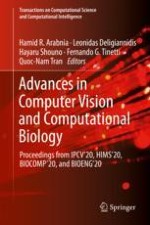The book presents the proceedings of four conferences: The 24th International Conference on Image Processing, Computer Vision, & Pattern Recognition (IPCV'20), The 6th International Conference on Health Informatics and Medical Systems (HIMS'20), The 21st International Conference on Bioinformatics & Computational Biology (BIOCOMP'20), and The 6th International Conference on Biomedical Engineering and Sciences (BIOENG'20). The conferences took place in Las Vegas, NV, USA, July 27-30, 2020, and are part of the larger 2020 World Congress in Computer Science, Computer Engineering, & Applied Computing (CSCE'20), which features 20 major tracks. Authors include academics, researchers, professionals, and students.
Presents the proceedings of four conferences as part of the 2020 World Congress in Computer Science, Computer Engineering, & Applied Computing (CSCE'20);Includes the tracks on Image Processing, Computer Vision, & Pattern Recognition, Health Informatics & Medical Systems, Bioinformatics, Computational Biology & Biomedical Engineering;Features papers from IPCV'20, HIMS'20, BIOCOMP'20, and BIOENG'20.
